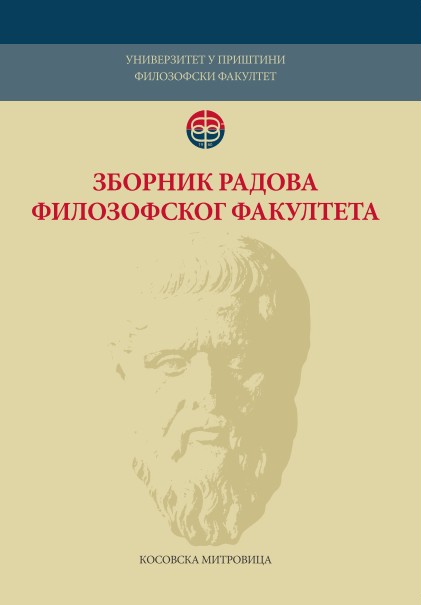Cultural Policy and Memory of the Fighters of the People's Liberation War: The Central Role of the Army in Political Legitimation of the New Political Structure
Cultural Policy and Memory of the Fighters of the People's Liberation War: The Central Role of the Army in Political Legitimation of the New Political Structure
Author(s): Marta M. Vukotić Lazar, Olivera S. Marković SavićSubject(s): History, Fine Arts / Performing Arts, Recent History (1900 till today), Sociology of Art, History of Art
Published by: Филозофски факултет, Универзитет у Приштини
Keywords: fighters; PLW; Partisans; SFRY; FPRY; ideology; sculpture; public urban areas
Summary/Abstract: The fighters of the People's Liberation War (PLW) enjoyed the social prestige and the monuments of the killed fighters served the role of the ideological interests of the ruling class at the time. The aim of this paper is to show the link between the alive social actors and the chosen dead ones (fighters of the PLW, partisans) through the use of the anthropological anxiety of the cessation of life through metaphorical immortality and eternal memory. Essentially, this was the illusion for ideological foundation, special thematic and ideological orientation of sculptures within the public space. Via symbolic contents, such as monuments in this case, death is shown as the transition, that is, new beginning of life and not its end. Active involvement of a number of artists from all parts of former Yugoslavia within the units of the Partisan army in the PLW is the phenomenon which unequivocally testifies about the link of their political commitment and artistic creation, which also got particularly strong momentum immediately after the Liberation. The most important social task in the Socialist Federal Republic of Yugoslavia (SFRY) was nurturing of the revolutionary tradition, especially seen in the erection of memorials, then in (re)naming of the towns with Tito's name or the names of the local heroes, as well as streets, schools, factories, but also in organizing marches to places where the famous battles and Partisan sessions during the PLW occurred, etc. This paper, among other things, deals with extremely fruitful production of the sculptors in the liberated country, especially from the aspect of extensive social orders, which at the same time encouraged and enabled fast and diverse development of the public monuments within urban areas on the ground of the whole former Yugoslavia, whose modus operandi was reshaping of the political and ideological map of The New Yugoslavia and ideological and political battle with "relapses of the past".
Journal: Зборник радова Филозофског факултета у Приштини
- Issue Year: 50/2020
- Issue No: 3
- Page Range: 27-44
- Page Count: 18
- Language: English

